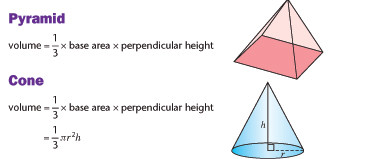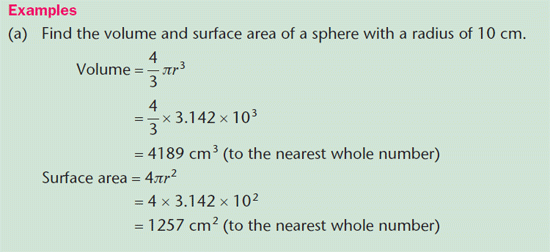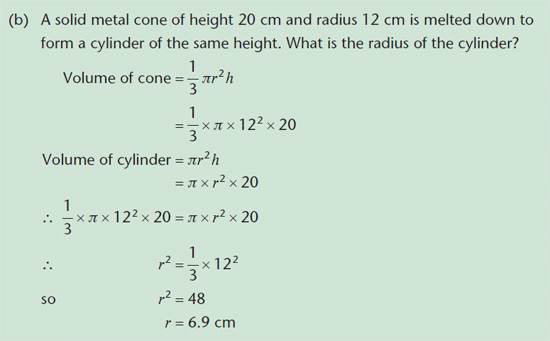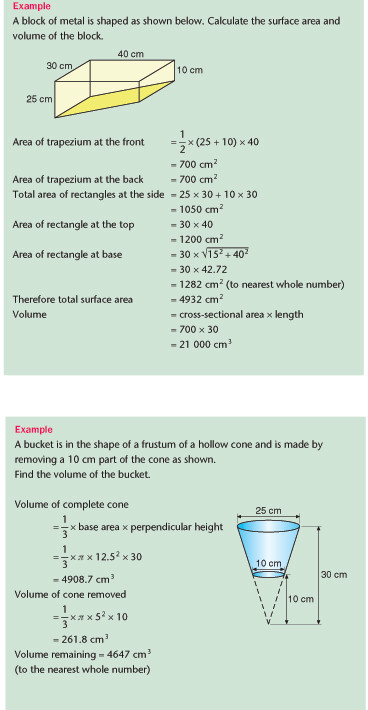After studying this section, you will be able to:
- recognise a prism as a solid with a uniform cross-section
- find the volume of a prism, a pyramid, a cone and a sphere
This video and images below explain the faces, vertices and edges of common three-dimensional shapes.
You should know and be able to use the formulae for the areas of the following shapes: parallelogram, rhombus, trapezium. These may be needed when calculating the volumes of prisms.
If a solid has a uniform cross-section; that is, the cross-sectional area is the same throughout its length then the solid is a prism.
You should also know the formulae for the volumes of the cone and the pyramid (although you would be given them in an examination).
Cones and Pyramids

- A cone can be treated as a pyramid with a circular base.
- The formula for the volume of a cone is the same as that for a pyramid:
Volume = 1/3 x base area x vertical height
Volume = 1/3πr2h
where r is the radius of the base and h is the vertical height of the cone.
- The curved surface area of a cone is given by:
S = πrl
where l is the slant height of the cone
- The total surface area of a cone consists of the curved surface area plus the area of its circular base.
- The total surface area is given by:
A = πrl + πr2
KEY POINT - The formula for the volume and curved surface area of a cone are given on the formula sheet that is included with the examination. However, it is much better to learn them.
Spheres
- A sphere is a ball shape.
- The Earth and other planets are approximately spherical.
- The volume of a sphere is given by the formula:
V = 4/3πr3
- The surface area of a sphere is given by the formula:
A = 4πr2


Practice Question

